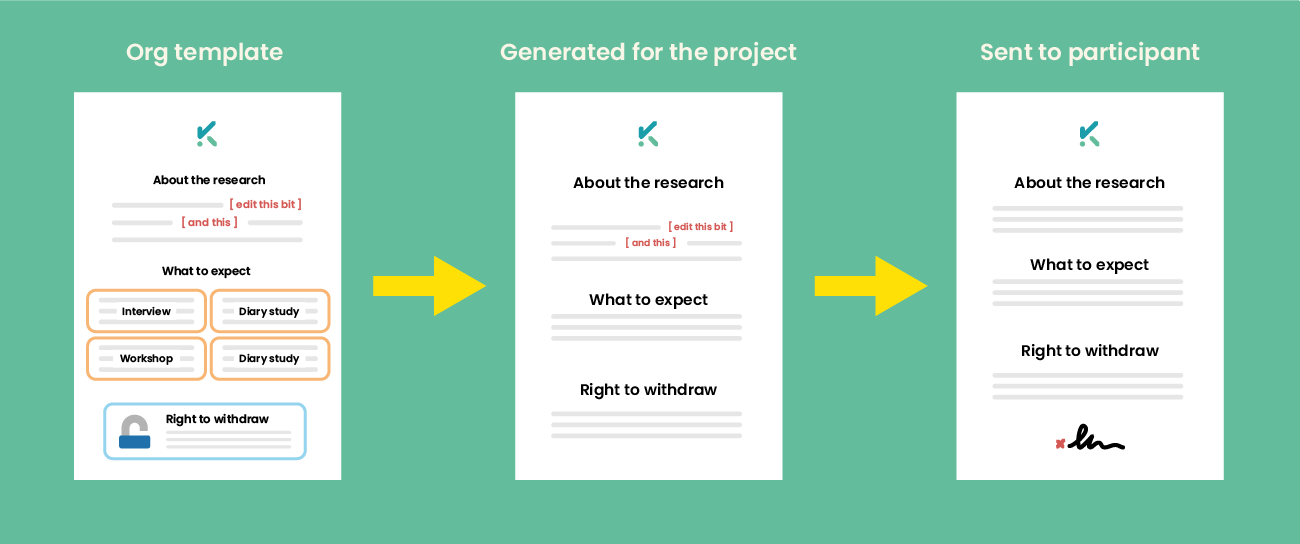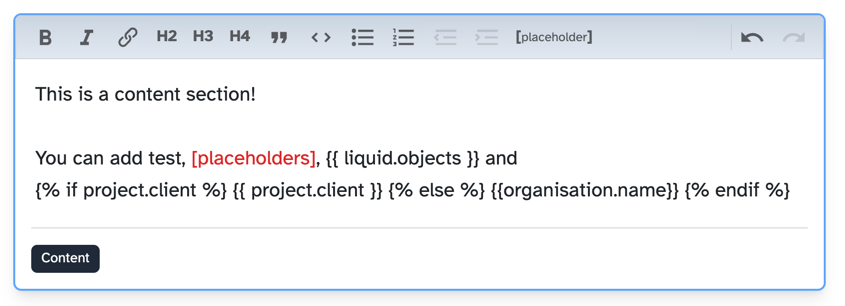How do consent templates work?
Consent Templates are a bit of a conceptual leap from more traditional consent forms.
As part of our research, we got to look at different consent forms across many industries. What was particularly interesting was how consent forms varied within a single organisation, from project to project.
We started to notice patterns:
- Some elements never changed (“the right to withdraw”)
- Some elements changed depending on the research method (“what to expect” or “the type of information we record”)
- Some elements changed to fit the context of each specific project (“why are you doing the research?”)
Consent template lifecycle

- Define your Consent Template to generate consent forms
- Each time a study is created, we use your template to generate a context specific consent form
- When you ask for consent, we attach the appropriate signature mechanism (email,in person or paper), create a unique instance of the form for each participant, and automatically setup your audit trail
Template components
Consent templates are made up of three main components: blocks, Liquid (objects and tags) and Placeholders.
Blocks
Blocks are the “building blocks” of your template. Consent Kit has the following blocks:
- Content
- Checkboxes

Content blocks enables you add headers, text, Placeholders, Liquid objects and Liquid tags into your template.

Checkboxes enable you to ask more granular questions of your participants. They will be converted to checkboxes before being sent to the participant. You can add and remove questions by clicking the add or remove buttons.

You can add or remove blocks from the top right corner of any existing section.
You cannot delete the following blocks:
- The first Content Section
- How long we keep your data
- Final opt-in section
Placeholders
For the parts of the form which can’t be re-used, we use Placeholders to prompt the person creating the form to fill in more information, specific to the project.
Placeholders can be added to any text in a Content section. To add a Placeholder, select the text you want to turn into a Placeholder (1) and click on the Placeholder button (2).

Liquid
We use an open source templating engine called Liquid to populate your consent templates with dynamic content.
At a very basic level, Liquid is made up of things called Objects and Tags.
Objects can be used to populate a consent form with information about the researcher (name, email), the project (name, client) or the organisation (name).
Tags can be used to add conditional logic to your templates, eg: If this is true, then use this content, else, use this content. This is particularly useful for populating parts of the form depending on the type of research method being used.
It might seem a little daunting at first, but it’s pretty straightforward once you understand some basic principles. Check out What is liquid for more information on how it works.
